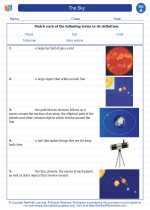The Moon
The Moon is Earth's only natural satellite. It is the fifth largest moon in the solar system. The Moon is about 1/6th the size of Earth and is about 238,855 miles away from Earth. It takes about 27.3 days for the Moon to orbit the Earth. The Moon has a significant impact on Earth, influencing tides, animal behavior, and even the length of a day.
Phases of the Moon
The Moon goes through different phases as it orbits the Earth. These phases are:
- New Moon: The Moon is not visible from Earth.
- Waxing Crescent: A small part of the Moon is visible, and it is growing.
- First Quarter: Half of the Moon is visible.
- Waxing Gibbous: Most of the Moon is visible, and it is still growing.
- Full Moon: The entire Moon is visible from Earth.
- Waning Gibbous: Most of the Moon is visible, and it is shrinking.
- Last Quarter: Half of the Moon is visible.
- Waning Crescent: A small part of the Moon is visible, and it is shrinking.
Surface of the Moon
The Moon's surface is covered with craters, mountains, and plains. The darker areas on the Moon are called maria (singular: mare), which are large, flat areas formed by ancient volcanic eruptions. The lighter areas are highlands, which are older and more heavily cratered than the maria.
Exploration of the Moon
The first human landing on the Moon was the Apollo 11 mission in 1969. Since then, several other missions have landed on the Moon, collecting samples and conducting experiments to learn more about its composition and history.
Study Guide
- What is the Moon's distance from Earth?
- How long does it take for the Moon to orbit the Earth?
- Describe the phases of the Moon.
- What are the dark, flat areas on the Moon's surface called?
- What was the name of the first mission to land humans on the Moon?
These questions can help you test your knowledge of the Moon. Feel free to explore more about the Moon and its influence on Earth!
[Moon] Related Worksheets and Study Guides:
.◂Science Worksheets and Study Guides First Grade. The Sky
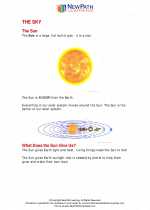
 Activity Lesson
Activity Lesson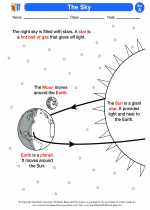
 Worksheet/Answer key
Worksheet/Answer key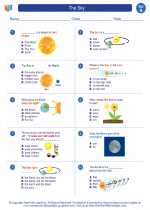
 Worksheet/Answer key
Worksheet/Answer key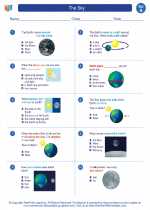
 Worksheet/Answer key
Worksheet/Answer key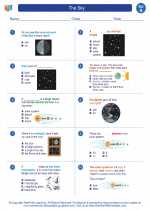
 Worksheet/Answer key
Worksheet/Answer key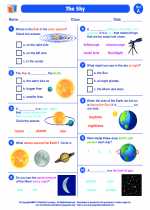
 Vocabulary/Answer key
Vocabulary/Answer key